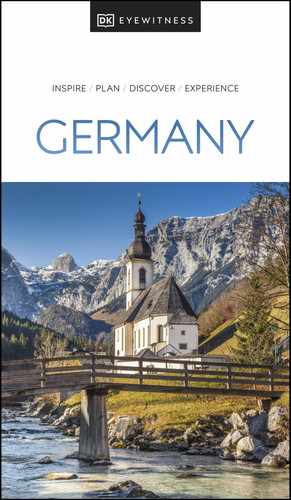Experience More

t The ornate interior of Schloss Hohenschwangau
The skyline of Schwangau is dominated by two castles, Schloss Neuschwanstein and the majestic Schloss Hohenschwangau. The fortified castle that occupied this site in the Middle Ages was remodelled in 1538–47 and, in 1567, it passed into the hands of the Wittelsbach family. It was destroyed during the Tyrolean War but in 1832 the heir to the throne (later Maximilian II) ordered the ruins to be rebuilt in Neo-Gothic style. The plans were prepared by Domenico Quaglio; after his death, work on the castle was continued by Georg Friedrich Ziebland and Joseph Daniel Ohlmüller.
This four-storey building, standing on medieval foundations, is flanked by angular towers. The wall paintings that decorate the rooms of the castle date from 1835–36. Their iconographic content, which is based on old Germanic sagas, is the work of Moritz von Schwind. A walk around the castle provides an excellent opportunity to study the Wittelsbach family history and to see the mid-19th- century furnishings. There are magnificent views of the surroundings from the castle’s lovely terraced gardens.
" ' =
Schloss Hohenschwangau
# Apr–mid-Oct: 8am–5pm daily; mid-Oct–Mar: 9am–3pm daily ∑ hohenschwangau.de
Oberstdorf lies in the valley of the River Iller. The ideal skiing conditions and the mild all-year-round climate make this one of the most popular health resorts in Germany. Nearby is the skiing stadium (Schattenberg-Skistadion) with its famous ski-jump, where the annual “four ski-jump” tournament starts each year.
Although the fire of 1865 destroyed large sections of the settlement here, some of the most important historic buildings escaped. These include Seelenkapelle (souls chapel), whose façade is decorated with a 16th-century wall painting typical of the region, and two chapels, Lorettokapelle and Josephskapelle, which were joined together in 1707. Just to the east of Oberstdorf is the 2,224-m (7,300-ft) Mount Nebelhorn, whose summit can be reached in a few minutes by cable car. This offers a spectacular view over the majestic Allgäuer Alps as well as providing an excellent starting point for mountain hiking.
Situated conveniently on an important trade route, Füssen experienced its most rapid growth in the late Middle Ages, as witnessed by many of the buildings in Reichenstrasse and the remains of the town fortifications, which include Sebastiantor (Sebastian gate) and sections of the walls with five turrets.
Perched on a rock, high above the town, stands the palace of the Augsburg prince-bishops. Started in 1291 by the Bavarian Prince Ludwig the Severe, construction was continued from 1490 to 1503 by the Augsburg bishops. The residential buildings of the palace range around a courtyard whose walls are decorated with trompe l’oeil door and window frames.
The eastern crypt and the church tower of St Mang are the remains of the medieval monastery complex. The late 10th-century crypt shows the remains of wall paintings.
Kempten lies at the centre of one of Germany’s most appealing tourist regions, the Allgäu, which stretches from Bodensee (Lake Constance) to the west and the River Lech to the east. The town, which boasts a history of over 2,000 years, was first mentioned by the Greek geographer and historian Strabo as a Celtic settlement, Kambodunon. Later, the Romans established Cambodunum on the right bank of the river Iller. Along with Augusta Vindelicorum (Augsburg) and Castra Regina (Regensburg), this was one of the most important towns in the Roman province of Raetia.
Medieval Kempten grew around a Benedictine abbey, founded in 752. In the north-western part of town is the church of St Lorenz. A triple-nave, galleried basilica with a twin-tower façade, this is the work of Michael Beer and Johann Serro. The town’s parish church of St Mang dates from the 15th century and in the Rathausplatz is an attractive town hall dating from 1474. The Kempten Residenz is a historic property in beautiful grounds. On the right bank of the River Iller is the Archäologischer Park Cambodunum, with excavated remains of Roman Cambodunum. The 13th-century Erasmuskapelle chapel is also worth visiting.
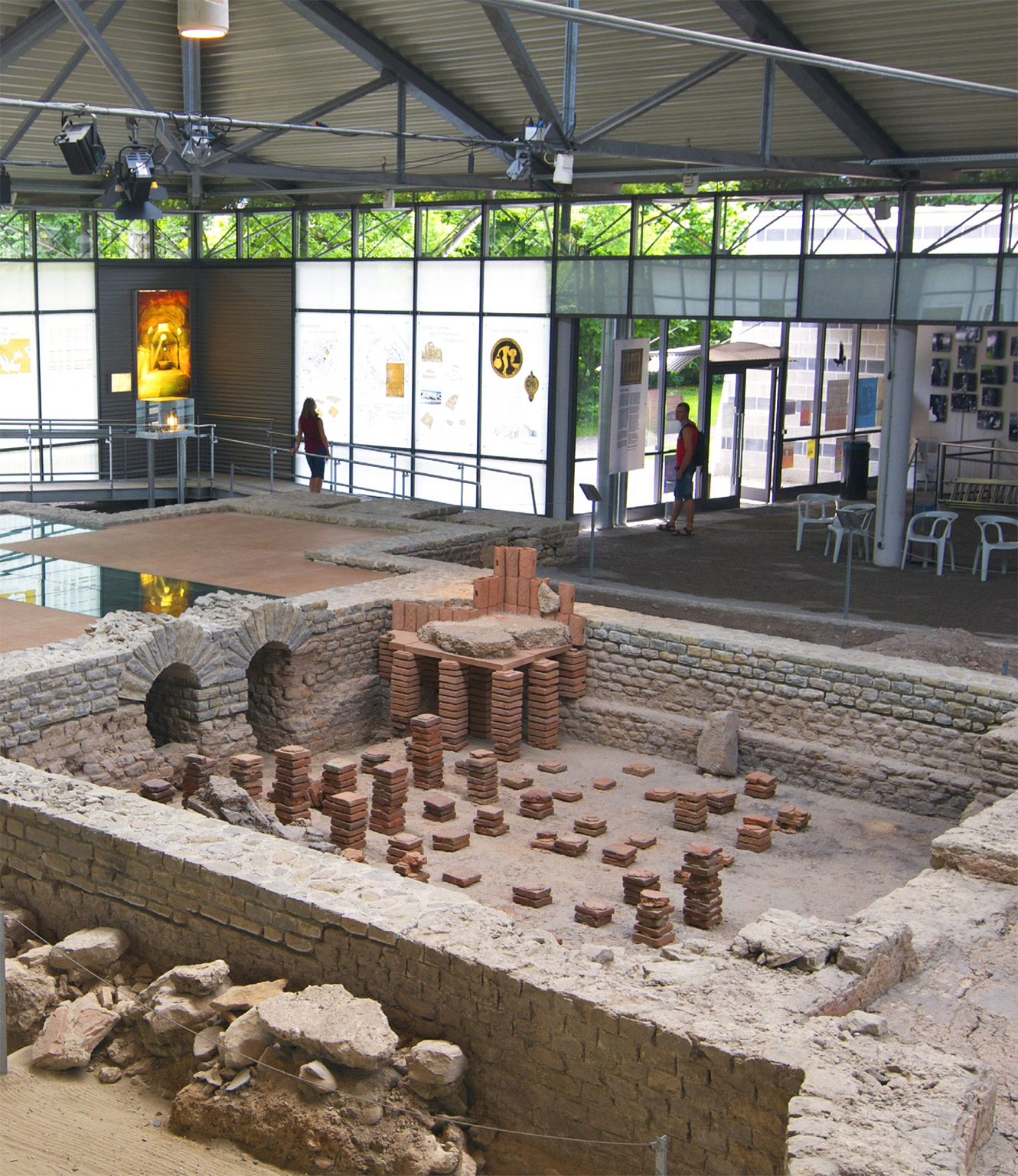
t Remains of the Kleine Thermen (little baths) at the Archäologischer Park
" '
Kempten Residenz
⌂ Residenzplatz 4–6 # Apr–Sep: 9am–4pm Tue–Sun; Oct: 10am–4pm Tue–Sun; Nov & Jan–Mar: 10am–4pm Sat & Sun; Dec: 12:15–4pm daily ∑ schloesser.bayern.de
" ' - =
Archäologischer Park Cambodunum
⌂ Cambodunumweg 3 § (0831) 2525 7777 # Mar–Nov: 10am–5pm ∑ apc-kempten.de
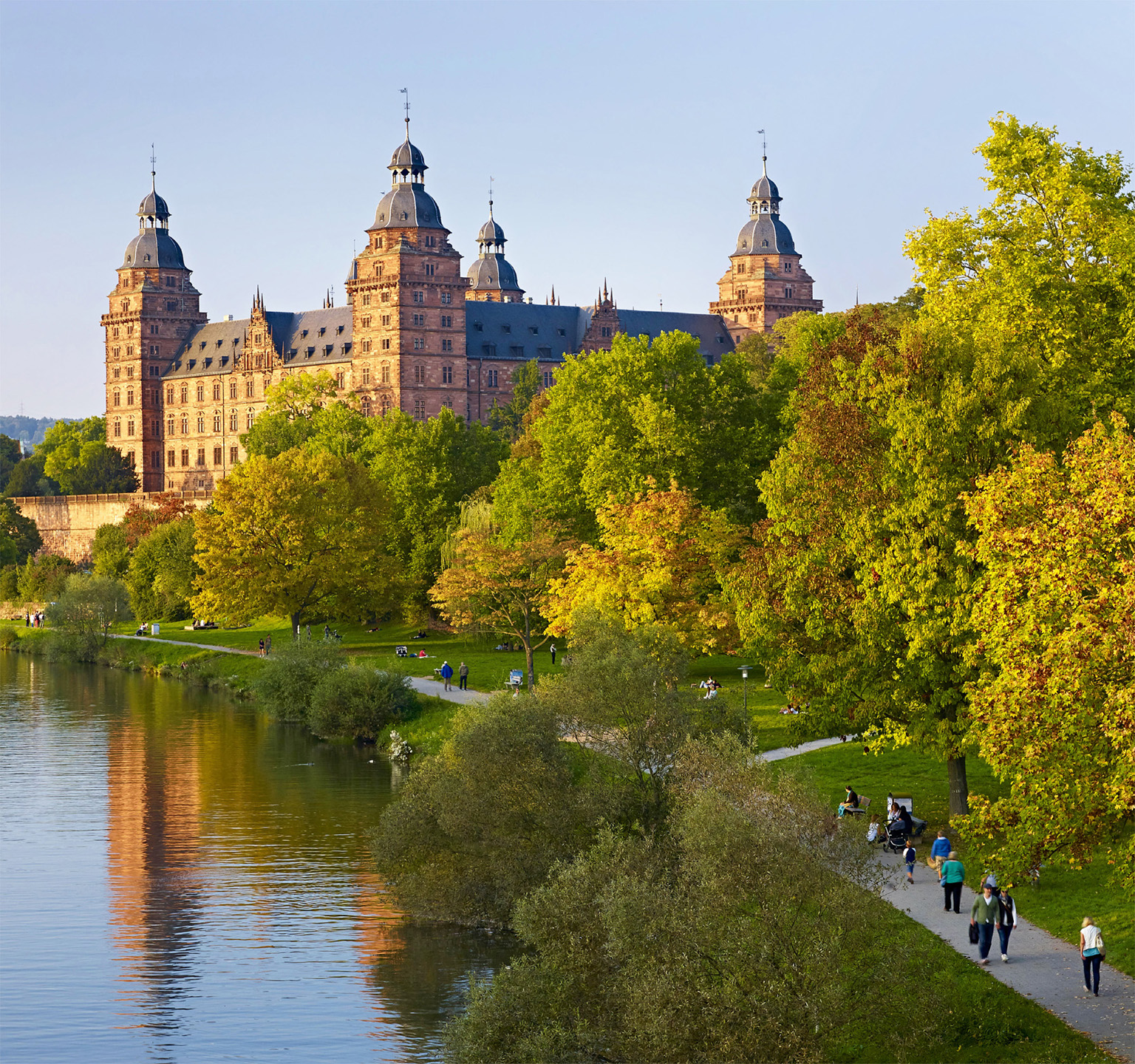
t Schloss Johannisburg in Aschaffenburg, seen from across the River Main
Situated in northwest Bavaria, Aschaffenburg enjoys a scenic position on the hilly right bank of the River Main. The town was the second residence of the electoral archbishops for more than 800 years.
The northwest part of the old town features a majestic, red sandstone riverside castle, Schloss Johannisburg, which along with its chapel is a unique masterpiece of 17th-century architecture.
The palace tour includes the world’s largest collection of cork architectural models of famous buildings in Rome, and the State Gallery, with one of the most important collections of Lucas Cranach the Elder’s paintings. Also worth seeing is the famous Lucas Cranach’s Altar of St Magdalene in the Stiftsmuseum and Matthias Gruenewald’s Lamentation of Christ in the Basilica of St Peter and Alexander.
Located just above a vineyard a short distance to the northwest of the castle is Pompejanum, an idealized Roman villa. King Ludwig I of Bavaria was inspired by the excavations at Pompeii and commissioned this unique villa for art lovers and students of ancient culture.
" =
Schloss Johannisburg
⌂ Schlossplatz 4 # Apr–Sep: 9am–6pm Tue–Sun; Oct–Mar: 10am–4pm Tue–Sun ∑ schloesser.bayern.de
On the edge of the Steigerwald – a popular hiking area – is the small village of Pommersfelden, which is dominated by its magnificent Baroque palace, Schloss Weissenstein. The palace was commissioned by the Mainz Archbishop and Elector and the Prince-Bishop of Bamberg, Lothar Franz von Schönborn. It was built, in only five years (1711–18), to a design by the architect Johann Dientzenhofer.
This masterpiece of secular Baroque architecture is worth visiting. Particularly interesting is the three-storey-high ornamental ceiling by Johann Rudolf Byss and Giovanni Francesco Marchini. The most spectacular room in the well-preserved interior is the Marble Hall, which features a fresco by Michael Rottmayr. Other attractions include a gallery, a library, and a valuable collection of furniture. After visiting the palace, you can stroll around its gardens, which were created by Maximilian von Welsch in 1715, in what was the then fashionable, geometric French style. It is now laid out in English-garden style.
" ' =
Schloss Weissenstein
# Times vary, check website ∑ schoenborn.de
Former residence of the Wettin family, Coburg is situated on the bank of the River Itz. It is dominated by a massive fortress, the Veste Coburg, which is one of the largest in Germany. Coburg’s origins go back to the 11th century, but its present-day appearance is mainly the result of remodelling that was carried out in the 16th and the 17th centuries.
The fortress consists of a number of buildings clustered around several courtyards and surrounded by a triple line of walls. The complex is now a museum, housing various collections, including prints and drawings, arms and armour.
In 1530 the fortress provided refuge to Martin Luther who, as an outlaw, hid here from April until October. The room in which he hid is filled with antique furniture and features a portrait of Luther, painted by Lucas Cranach the Younger.
Among the most important buildings in the old town are the late-Gothic church of St Maurice and a beautiful Renaissance college building that was founded by Prince Johann Casimir in 1605. On the opposite side of the market square is the town hall, built in 1577–9 and remodelled in the 18th century.
Farther along is the town castle, Schloss Ehrenburg, which was built in the 16th century on the site of a dissolved Franciscan monastery. The original castle building burned down in 1693 and was subsequently rebuilt. The façade facing the square was remodelled by Karl Friedrich Schinkel in Neo-Gothic style.
The castle has some fine interiors, including the Baroque Riesensaal (Giants’ Hall) and Weisser Saal (White Hall), and a chapel with rich stucco decorations.
" =
Veste Coburg
# Apr–Oct: 9:30am–5pm daily; Nov–Mar: 1–4pm Tue–Sun ∑ kunstsammlungen-coburg.de
" ' =
Schloss Ehrenburg
⌂ Schlossplatz 1 # Apr–Sep: 9am–6pm Tue–Sun; Oct–Mar: 10am–4pm Tue–Sun ∑ schloesser.bayern.de

t Busts of comrades in Ludwig I’s Walhalla memorial
Completed in 1842 by Leo von Klenze, this enormous monument to the national glory stands imperiously above the River Danube. The building has the form of a Neo-Classical temple and is adorned with 131 marble busts of artists and scientists.

t The monument’s exterior
Medieval Towns in Central Bavaria
Medieval history is still palpable in some of the towns in Bavaria. In the west lies Dinkelsbühl, an old Franconian town with one of the best-preserved medieval urban complexes in Germany. The residential district consists mainly of timber-frame houses. In the centre of the state is Berching: a charming little town in the valley of the River Sulz, boasting a history that goes back to the 9th century. To this day it retains the complete enclosure of its medieval city walls, including towers and gates with oak doors.Farther north is Amberg, on the River Vils. This well-preserved old town is encircled by medieval walls. The arches of the iconic Stadtbrille bridge reflect in the river to resemble a pair of glasses.
High above the River Main is Banz Abbey, a Benedictine monastery built in 1695 by brothers Johann Leonhard and Leonhard Dientzenhofer. Opposite is the pilgrimage church of the Fourteen Saints of Intercession. The first two chapels, built in the 15th and 16th centuries, became too small to accommodate the growing numbers of pilgrims so, in 1741, the foundation stone was laid for the monumental new church, designed by Balthasar Neumann. Built in 1743–72, this is one of the most famous masterpieces of South German Baroque, with magnificent Rococo furnishings. The building is cross-shaped, with a twin-tower façade.
The interior has an exceptionally dynamic style, achieved by combining the longitudinal and central planes: the three ovals laid along the main axis join with the two circles of the transept. The centrepiece of the nave is the Altar of Mercy, which stands at the spot where, according to a 1446 legend, a shepherd had visions of the infant Christ with the Saints of Intercession. The altar features statues of the 14 saints, and are the work of J M and F X Feuchtmayr (1763). The rich stucco decorations and frescoes were crafted by Giuseppe Appiani.

t The Baroque interior of the church of the Vierzehnheiligen

t The summer sun over the green Fränkische Schweiz landscape
The area popularly known as Franconian Switzerland covers the area between Nürnberg, Bamberg and Bayreuth. One of Germany’s most beautiful tourist regions, it offers green meadows, magnificent highlands covered with cornfields, lovely castles perched on top of high outcrops, fabulous rocks and deep caves with stalactites. Its towns and villages, with their charming inns and timber-frame houses, look like a setting for Snow White and the Seven Dwarfs. The main routes across the area run alongside its rivers – the Wiesent, Leinleiter, Püttlach and Trubach. The Wiesent, which is ideal for canoeing, cuts across the region from east to west, joining the River Regnitz near Forchheim. The town has many timber-frame houses, including the old town hall, dating from the 14th to the 16th century. Near Forchheim, in Ebermannstadt, is a Marian church with a fine Madonna. The federal route B470 leads to the picturesque village of Tüchersfeld, which is built into the rocks.
A good base for exploring this area is the village of Pottenstein. St Elisabeth of Thuringia is said to have stayed here in 1227. The town is overlooked by an 11th-century castle, and nearby is a cave with impressive rock formations.
Did You Know?
The Agnes-Bernauer Festival honours the fascinating but tragic mistress of a Bavarian nobleman.
This market town enjoys a picturesque setting on the river Danube. The 600-m- (1,970-ft-) long market square is arranged into two sections, Theresienplatz and Ludwigplatz, and is part of the former trade route that led to Prague. The area is lined with buildings in Baroque, Neo-Classical and Secession styles.
At the centre of the market square stands the landmark 14th-century municipal tower, which offers a splendid view over the towns of the Bavarian Forest. At Ludwigplatz 23 is the “Lion’s Pharmacy”, where the Biedermeier painter Karl Spitzweg worked as an apprentice in 1828–30.
Upon turning from colourful Theresienplatz and into Seminargasse or Jakobsgasse, you will reach the monumental brick structure of the parish church of St Jakob (1400–1590). This triple-nave hall-church, crowned with a network vault, retains many original features, including stained-glass windows in the chapels of Maria-Hilf-Kapelle (1420) and St Bartholomew. The so-called Moses’ Window in the Chapel of St Joseph was made in 1490 in Nürnberg, based on a sketch provided by Wilhelm Playdenwurff. In the Cobbler’s Chapel (Schusterkapelle) hangs a painting of Madonna and Child, by Hans Holbein (around 1500). Overlooking the Danube is a 14th- to 15th-century castle, formerly a ducal residence. The Agnes-Bernauer Festival, held every four years, takes place in the courtyard of the castle. The Gäubodenvolksfest is the second largest folk festival in Bavaria after the Munich Oktoberfest. The Gäubodenmuseum has a magnificent collection of Roman artifacts.
In the tiny village of Aufhausen, 21 km (12 miles) to the west, is the beautiful late-Baroque pilgrimage church of Maria Schnee. Built by Johann Michael Fischer in 1736–51, it includes magnificent wall paintings by the Asam brothers and a statue of the Madonna. Commissioned by Duke Wilhelm V of Bavaria, the Gnadenmadonna is believed to pardon sins.
In Oberalteich, some 10 km (6 miles) to the east, is the beautiful church of St Peter and St Paul built in the early 17th century for the Benedictine order. Inside, an unusual hanging staircase leads to the galleries, while the vestibule is decorated with stucco ornaments depicting bird motifs.
In Windberg, 22 km (14 miles) east of Oberalteich, is a Romanesque Marian church whose main portal (around 1220) features an image of the Madonna in the tympanum.
"
Gäubodenmuseum
⌂ Fraunhoferstrasse 23 # 10am–4pm Tue–Sun ∑ gaeubodenmuseum.de
Experience Bavaria
|
eat Weissbierhaus For some hearty Bavarian food and towering steins of unsurpassed beer, head to this friendly tavern on Straubing’s main square. The menu includes a variety of sausages and regional specialities, particularly pork dishes. Enjoy your meal either in the cosy dining room or out on the cobbles. ⌂ Theresienplatz 32, Straubing ∑ straubinger-weissbierhaus.de ¡¡¡ |

picture perfect
Fünfseenland
The lakes of the Fünfseenland provide many photogenic locations. The shore at Starnberg, the Ludwig II cross at Berg and any of the lakes while frozen in winter are beautiful sights to capture.
For most people the name Dachau is inextricably linked with the concentration camp that was built here by the Nazis in 1933. Since 1965, the whole site has been designated as a memorial, KZ-Gedenkstätte Dachau, to over 40,000 prisoners who were murdered there, with a permanent exhibition in the former domestic quarters of the camp.
Dachau itself is a beautiful town with many historic buildings. On the southwestern edge of the old town stands Schloss Dachau, summer residence of the Wittelsbachs. The palace of today was created in the 18th century from the western wing of an earlier castle, the work of Joseph Effner.
In the early 20th century the area surrounding the castle housed a colony of artists who had tired of city life, known as Malschule Neu-Dachau (new Dachau Art School). Many of their paintings, inspired by the local scenery, can be seen in the Dachauer Gemäldegalerie (Painting Gallery).
- =
KZ-Gedenkstätte Dachau
⌂ Alte Römerstrasse 75 # 9am–5pm daily ∑ kz-gedenkstaette-dachau.de
"
Schloss Dachau
⌂ Schlossstrasse 2 # Apr–Sep: 9am–6pm Tue–Sun; Oct–Mar: 10am–4pm Tue–Sun ∑ schloesse.bayern.de
"
Dachauer Gemäldegalerie
⌂ Konrad-Adenauer-Strasse 3 # 11am–5pm Tue–Fri, 1–5pm Sat & Sun ∑ dachauer-galerien-museen.de
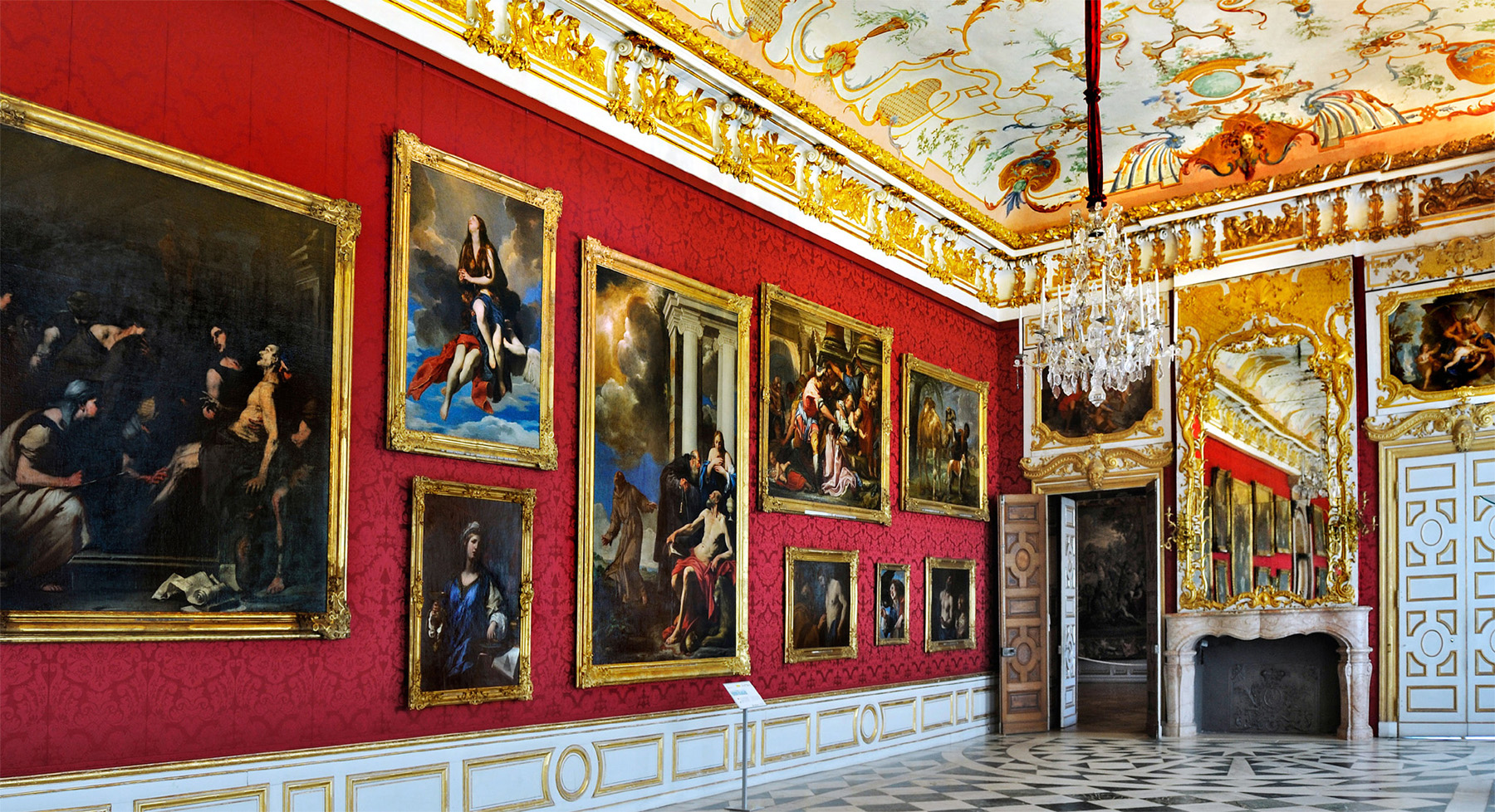
t The Great Gallery, on the first floor of the Neues Schloss, in Schleissheim
Schleissheim is situated barely 14 km (9 miles) from Munich, making it easy to visit its Baroque palace and park.
Now somewhat neglected, the park was established in the 17th and 18th centuries and includes three palaces. The modest Altes Schloss was built in 1623 for Prince Wilhelm V and houses an exhibition of religious folk art.
Schloss Lustheim is a small, Baroque, hermitage-type palace, built in 1684–7 by Enrico Zucalli for the Elector Max Emanuel. It has beautiful interiors and a magnificent collection of Meissen porcelain.
The newest building is the Neues Schloss (New Palace), designed by Enrico Zucalli. Work began in 1701 but was not completed until the second half of the 18th century. It now houses exhibits belonging to the Bavarian State Museum.
"
Altes Schloss, Schloss Lustheim and Neues Schloss
# Apr–Sep: 9am–6pm Tue–Sun; Oct–Mar: 10am–4pm Tue–Sun ∑ schloesser-schleissheim.de
Upper Bavaria’s Fünfseenland consists of, as the name suggests, five lakes set in a glacial plain: the big Starnberger See and Ammersee, plus Pilsensee, Wörthsee and Wesslinger See. The lakes were once used exclusively by royalty, but nowadays draw tourists who come to swim, sail and windsurf at the lakes, as well as hike and cycle the countryside trails between them. The area is also dotted with interesting towns and villages offering lovely restaurants, cafés and beer gardens.
The River Danube flows through this former seat of the Wittelsbach family, and the town features many important historic buildings dating from the Middle Ages and the Renaissance and Baroque periods. Among the most outstanding architecture is the church of the Virgin Mary, a triple-nave hall structure. Its Gothic-Renaissance main altar dates from 1572.
Another notable building is the Neues Schloss, which was built between the 15th and 18th centuries and features stately rooms and a Gothic chapel. It now houses the Bayerisches Armeemuseum (Bavarian Army Museum).
A true gem of Bavarian architecture is the church of St Maria Victoria, the work of Cosmas Damian Asam.
The Deutsches Medizinhistorisches Museum exhibits medical instruments and has a beautiful formal garden of medicinal plants.
"
Bayerisches Armeemuseum
⌂ Neues Schloss, Paradeplatz 4 # 9am–5:30pm Tue–Fri, 10am–5:30pm Sat & Sun ∑ armeemuseum.de
"
Deutsches Medizinhistorisches Museum
⌂ Anatomiestrasse 18–20 # 10am–5pm Tue–Sun ∑ dmm-ingolstadt.de

t Sunset over the old town of Landshut, as seen from across the Isar river
The earliest records of Landshut date from 1150. One hundred years later it was a town and the main centre of power of the Dukes of Lower Bavaria. In 1475 it was the scene of the lavish wedding of Duke Georg of the House of Wittelsbach and the Polish Princess Hedwig Jagiellonica.
Landshut has preserved its medieval urban layout, with two wide parallel streets, Altstadt and Neustadt, and clusters of historic 15th- to 16th- century buildings. Opposite the town hall in Alstadt is the Stadtresidenz, a town house modelled on the Palazzo del Tè in Mantua. It was the first Renaissance palace to be built in Germany.
The vast brick basilica of St Martin (1385–1500) is a narrow hall-church featuring network vaults (1459) and the world’s tallest brick steeple.
Landshut is dominated by the 13th- to 16th- century Burg Trausnitz, with its medieval tower, a Renaissance palace (1568–78) and the Kunst- und Wunderkammer (Room of Arts and Wonder), a branch of the Bayerisches Nationalmuseum.
From Landshut, take a trip to Moosburg, 14 km (9 miles) west, home of the early 13th-century church of St Castulus.
" '
Stadtresidenz
⌂ Altstadt 79 § (0871) 251 42 # Apr–Sep: 9am–6pm Tue–Sun; Oct–Mar: 10am–4pm Tue–Sun
"
Burg Trausnitz & Kunst- und Wunderkammer
# Apr–Sep: 9am–6pm daily (Oct–Mar: to 4pm) ∑ burg-trausnitz.de
Did You Know?
A historical pageant is held in Landshut every four years, in memory of the wedding of Georg and Hedwig.

t View of Schloss Neuburg across the River Danube, in Neuburg an der Donau
Perched on a promontory overlooking the Danube, Neuburg is one of Bavaria’s loveliest towns. During the Middle Ages, it changed hands frequently but was eventually ruled by the Wittelsbach Court Ottheinrich, under whom the town grew and prospered on an unprecedented scale. He was the founder of Schloss Neuburg, built between 1534 and 1665, whose massive round towers still dominate the town. Its earliest part is the east wing. The court-yard, surrounded by arcades, has beautiful frescoes by Hans Schroer. In the tower is a staircase adorned with paintings. The castle chapel, completed in 1543, is one of Germany’s oldest, purpose-built Protestant churches.
In Amalienstrasse stands the former Jesuits’ College and the court church (Hofkirche). Work on the church began in the late 16th century and was completed in 1627. It was intended to be a Protestant church, but the ruling family converted back to Catholicism during its construction and it was taken over by the Jesuits, who turned it into a counter-reformation Marian church. The triple-nave hall structure has an exquisite interior in gold, white and grey.
Among many old buildings that survive in the town centre are the Graf-Veri-Haus and the Baron-von-Hartman-Haus in Herrenstrasse. To the east of town stands the Grünau Castle (Jagdschloss), built for Ottheinrich in 1530–55.
Just 18 km (11 miles) to the south, Schrobenhausen is the birthplace of the painter Franz von Lenbach, who was born in 1836. A museum in Ulrich-Peisser-Gasse honours him.
" -
Schloss Neuburg
⌂ Residenzstrasse 2 # Apr–Sep: 9am–6pm Tue–Sun; Oct–Mar: 10am–4pm Tue–Sun ∑ schloesser.bayern.de
Situated on the banks of the River Isar, just 20 minutes by train from Munich, is the old town of Freising. Its history is closely connected with St Korbinian, who founded the bishopric here in the early 8th century. Korbinian died around AD 725 and his remains still lie in the crypt of the Dom – the cathedral church of the Birth of the Virgin Mary and St Korbinian (1159–1205). This is a five-nave basilica, without transept, with an elongated choir and a massive twin-tower western façade. Its interior was remodelled in Baroque style by the Asam brothers in 1724–5. The four-nave Romanesque crypt features a famous column (Bestiensäule), which is decorated with carvings of fantastic animals. Nearby is the Diözesanmuseum, whose vast ecclesiastical collection includes two paintings by Rubens.
At the southwestern end of the old town is a former monastery, Weihenstephan, home to the world’s longest-established brewery and a botanical garden.

t Elaborate altarpiece in the Baroque-style cathedral of Freising
"
Diözesanmuseum
⌂ Domberg 21 § (08161) 487 90 ¢ For renovation
The village of Andechs, located at the summit of the 700-m- (2,300-ft-) high Holy Mountain of the same name, is well known as the destination of pilgrimages to the local church. But it is also the target of many less spiritual trips to the Bräustüberl (beer room), where visitors can refresh themselves with the excellent beer that is brewed here by the local monks.
The present triple-nave Gothic hall-church was built over a six-year period, between 1420 and 1425. Its Rococo interior dates from 1755. The lower tier of the main altar contains the orante Miraculous Statue of the Mother of God (1468), while the upper tier features the Assumpta by Hans Degler (1609). On selected feast days, holy relics are displayed on the altar gallery.
The history of Landsberg goes back to 1160, when Heinrich der Löwe (Henry the Lion) built his castle here, on the right bank of the River Lech. During the 13th century, the surrounding settlement grew into a town, which soon became a major trading centre. Religious conflicts, culminating in the Thirty Years’ War, put an end to developments, but in the late 1600s the town once again became a commercial and cultural hub.
At the heart of Landsberg is the Hauptplatz (main square), with its Baroque town hall and the intricately carved 14th-century tower, Schmalztor.
In Ludwigstrasse is the late-Gothic parish church, Mariä Himmelfahrt, whose interior features a statue of the Madonna and Child by Hans Multscher. Bayertor, the original town gate, is in the eastern part of the old town.
The Neues Stadtmuseum is a useful source of information on local history.
"
Neues Stadtmuseum
⌂ Von-Helfenstein-Gasse 426 § (08191) 12 83 60 ¢ For renovation until 2024

Insider Tip
Herrsching to Andechs Hike
This 4-km- (2.5-mile-) long walk will take you from the bustle of Munich to bucolic Bavaria. Reward yourself at the end with the monks’ beer at the monastery in Andechs.
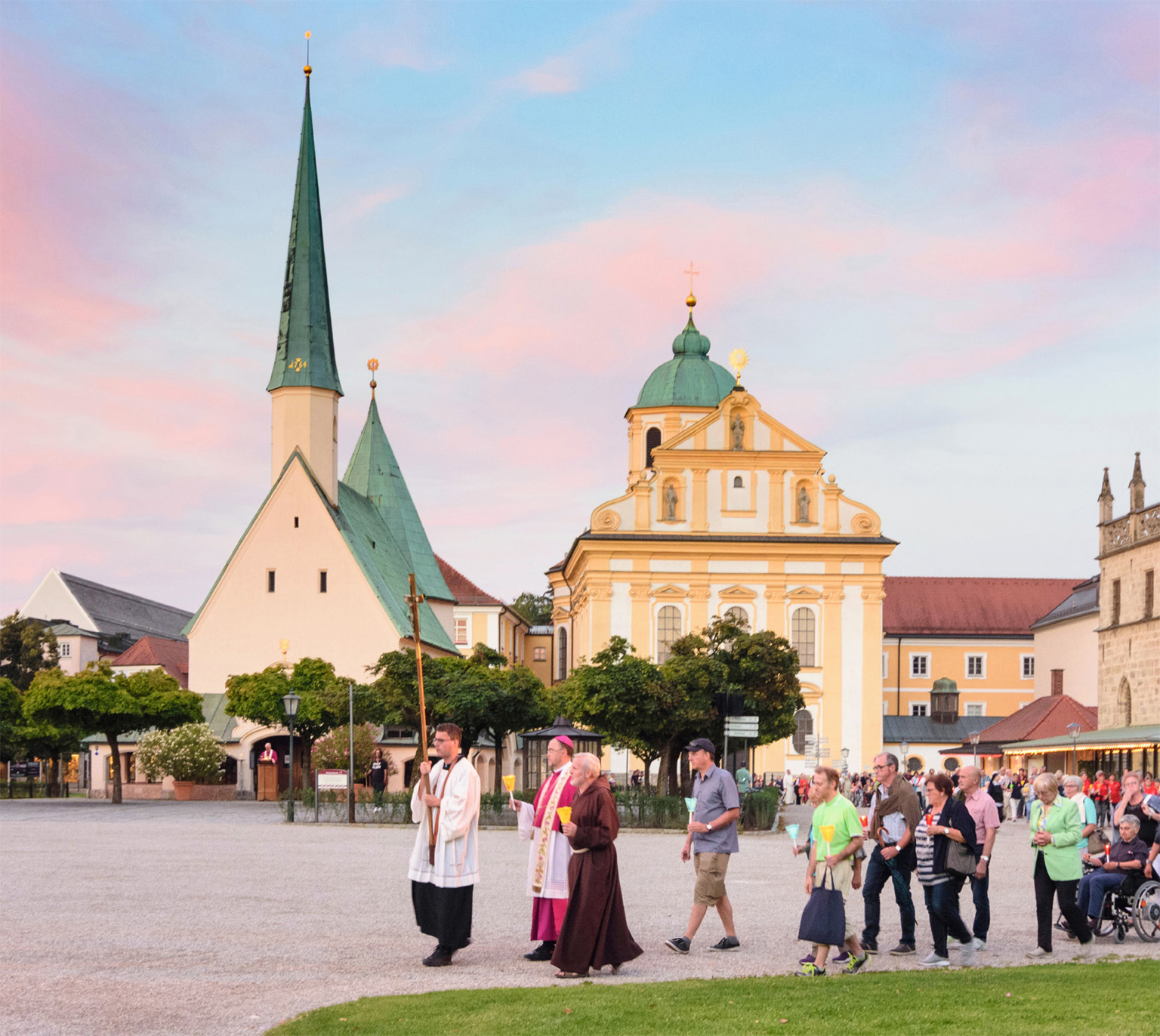
t A candlelight procession passes by the Gnadenkapelle in Altötting
Altötting is renowned as the earliest destination of pilgrimages to the “Miraculous Statue” of the Virgin Mary (1330). The statue stands in the Wallfahrtskapelle St Maria, which consists of two parts. The central Gnadenkapelle (Grace Chapel, around AD 750) was once the baptistery. The external chapel was built in 1494 and the ambulatory in 1517. It also houses the so-called “Silver Prince”, representing the miraculously cured son of the Prince-Elector Karl Albrecht. Many Bavarian royals wished to be buried here.
Nearby is the Romanesque-Gothic church of St Philip and St Jacob (1228–30 and 1499–1520), which contains many tombstones.
The Schatzkammer (treasury) was housed in the former sacristy, but after Pope Benedict XVI turned it into a chapel in 2006 the Neue Schatzkammer and Wallfahrtsmuseum (Pilgrimage Museum) were built. Exhibits include an exquisite example of French enamel and gold art, the Goldenes Rössl (Golden Steed; around 1400). Despite its name, its theme is the Adoration of the Magi.
Neue Schatzkammer and Wallfahrtsmuseum
⌂ Kapellplatz 4 # Mar–Nov: 10am–4pm Tue–Sun; Dec: 1pm–6pm Mon–Fri, 10am–6pm Sat & Sun ∑ neueschatzkammer.de
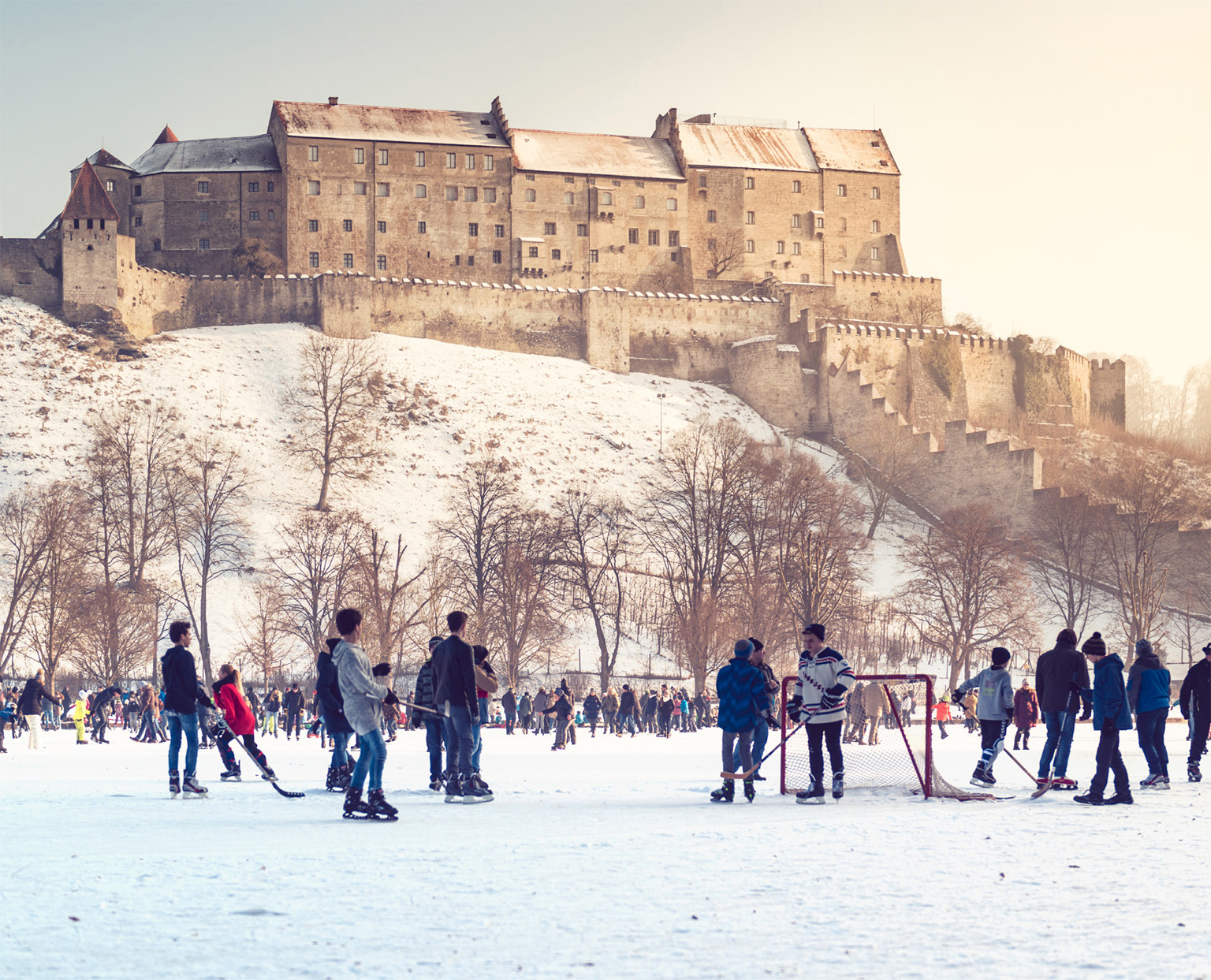
t A hockey game on the frozen lake below Burghausen Castle
Picturesque Burghausen is situated on the River Salzach. Towering over it all is Burg Burghausen, the world’s longest castle, built on a high ridge stretching for 1,050 m (1,150 yds). Work on the castle started in 1253, but most of the buildings were erected during the reign of Duke Georg der Reiche (George the Rich) and have late-Gothic forms. The duke’s wife, Hedwig Jagiellonica, whom he married in Landshut, was later rejected by him and she spent her final days in this fortress.
The castle consists of two main parts: the castle itself, with tower, residential quarters, courtyard and domestic buildings; and the approach (Vorburg). The residential building has some fine 15th- and 16th-century paintings. A special door links the Prince’s quarters with the “internal” chapel of St Elisabeth.
The castle approach has five courtyards (Vorhöfe). In the fourth courtyard is the “external” chapel of St Jadwiga (Aussere Burgkapelle St Hedwig) – the work of Wolfgang Wiesinger, a native of Salzburg (1489). This has numerous original buildings, including the town hall, which was created by combining three burgher houses from the 14th and 15th centuries.
" -
Burg Burghausen
# Apr–Sep: 9am–6pm daily; Oct–Mar: 10am–4pm daily ∑ burg-burghausen.de
Did You Know?
Burg Burghausen had 100,000 troops during Napoleon’s campaign against the Austro-Hungarian Empire.
Lying in the valley of the River Loisach, Garmisch-Partenkirchen is the best-known resort in the Bavarian Alps, offering ideal skiing conditions. In 1936 it hosted the Winter Olympic Games and, in 1978, the World Skiing Championships. From Garmisch-Partenkirchen, Germany’s highest peak, Zugspitze (2,962 m/9,718 ft), can be reached by taking the narrow-gauge railway to Zugspitzplatt or a cable car, which reaches the summit in a few minutes. Garmisch-Partenkirchen’s parish church of St Martin (Alte Pfarrkirche St Martin) is worth a visit. It was built in the 13th century and extended in the 15th century and features some well-preserved Gothic wall paintings and net vaulting. The Werdenfels Museum shows how people in this region lived in the past, with a collection of furniture, clothing and room reconstructions.
"
Werdenfels Museum
⌂ Ludwigstrasse 47 # 10am–5pm Tue–Sun ∑ werdenfels-museum.de
Situated some 20 km (12 miles) north of Garmisch-Partenkirchen, on the site of a 9th-century Welfs’ fort, Oberammergau is world famous for its folk art and passion plays. The Thirty Years’ War (1618–48) and the plague of 1632 came close to wiping out the entire population of the village. Its surviving inhabitants pledged that if they were saved from extinction they would stage for evermore a play about Christ’s Passion. No further deaths occurred and, to this day, the villagers have kept their pledge. Every ten years, some 2,500 people take part in the six-hour-long spectacle, in which they transform themselves from Bavarians into Jews and Romans from the time of Christ. About one hundred performances are staged between mid-May and mid-October in the huge Passionsspielhaus (Passion Play Theatre).
Worth seeing in the village are the Rococo church of Saint Peter and Saint Paul (1735–40) and the Pilatushaus, with its illusionist painting of Christ before Pilate on the façade. The Oberammergau Museum has a notable collection of wooden cribs.
"
Oberammergau Museum
⌂ Dorfstrasse 8 # 10am–5pm Tue–Sun ¢ Feb, Mar, Nov ∑ oberammergaumuseum.de
Situated 13 km (8 miles) from Memmingen, the small health resort of Ottobeuren is the site of one of Germany’s most famous Benedictine abbeys. Founded in 764, the abbey is still a place of prayer and work for the monks who live here. In the 18th century the abbey was remodelled by Abbot Rupert II. The new buildings were completed in 1731, and the richly decorated interiors, with stuccoes by Andrea Maini, still survive. A new abbey church was built between 1737 and 1766, with construction supervised initially by Simpert Kramer. In 1748 this was taken over by Johann Michael Fischer, who was responsible for its final appearance.
The interior of the church has a magnificent unity of style: Rococo stuccoes by Johann Michael Feuchtmayr are in perfect harmony with the vault frescoes by Johann Jakob Zeiller as well as the splendid altars and stalls by Martin Hörmann and Johann Zeiller’s brother Franz Anton. The abbey’s three beautiful organs can be heard at regularly held recitals.
Experience Bavaria
Richard Wagner (1813–1883)
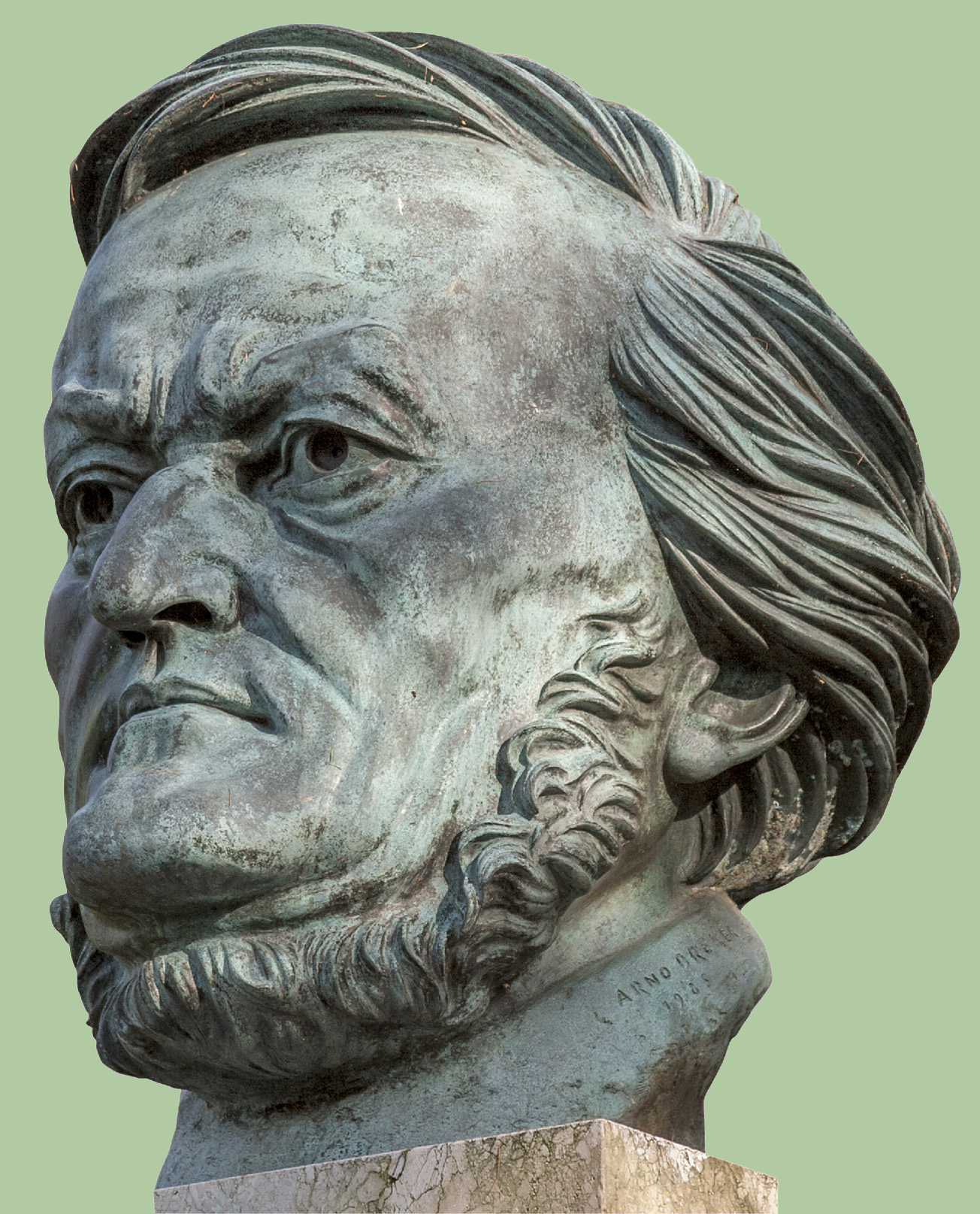
The German composer is inseparable from Bayreuth, where he enjoyed his greatest triumphs. His career began in Magdeburg, Königsberg and Riga. From there he fled to Paris to evade creditors. His reputation was established by performances of his romantic operas The Flying Dutchman (1843) and Tannhäuser (1845) in Dresden. Wagner’s long-time sponsor was the eccentric Bavarian king Ludwig II. From 1872 Wagner lived in Bayreuth, where the Festspielhaus was built specifically for his operas.

t The dramatic orangery of Bayreuth’s Neues Schloss in its beautiful park
Lovers of German music associate this town with the composer Richard Wagner (1813–83), who took up residence here in 1872. Established in 1231, Bayreuth originally belonged to the family of Count von Andechs-Meran; in 1248 it passed to the margraves of Nürnberg (von Zollern) and, since 1806, Franconian Bayreuth has belonged to Bavaria. The town flourished during the 17th and 18th centuries when it was the residence of the margraves, particularly during the time of Margravine Wilhelmine, sister of the Prussian King Frederick the Great and wife of Margrave Friedrich.
Bayreuth’s cultural legacy is evident in the Markgräfliches Opernhaus – one of the finest theatres in Europe – and the Frank-Liszt-Museum honouring the Hungarian composer.
The Neues Schloss (New Palace) was commissioned by Margravine Wilhelmine and built by Joseph Saint-Pierre. The elongated, three-storey structure combines classical lines with a rustic ground floor. The Italian wing was added in 1759. Nearly all the rooms still have their original Baroque and Rococo decor, while the park is arranged in a typically English style.
The villa that is now the Richard Wagner Museum, dedicated to the composer, was originally built for Wagner by Carl Wölfel. It was, destroyed during World War II but restored in the 1970s. Each July and August, Wagner festivals are held at the Festspielhaus (Festival Theatre). The world premiere of The Ring of the Nibelung played here in 1876.
In 1715–18, following the example of the French king Louis XIV and the fashion among the nobility for playing at asceticism, Margrave Georg Wilhelm ordered the building of the Eremitage complex as a retreat. With its horseshoe-shaped orangery, the hermitage (or Altes Schloss, Old Palace) was given as a gift to Margravine Wilhelmine in 1732, who transformed it into a pleasure palace.
Approximately 20 km (12 miles) to the northwest of Bayreuth is Kulmbach. Well known for its breweries, the town hosts a big beer festival each year, in July and August. Its town hall has a beautiful Rococo façade dating from 1752. From here you can walk to the castle hill to visit the vast Plassenburg fortress, which has belonged to the Hohenzollern family since 1340. Until 1604 this was the seat of the von Brandenburg-Kulmbach margraves. Built in 1560–70, the gem in its crown is the Renaissance courtyard with arcades (Schöner Hof). The castle houses a huge collection of tin figurines.
Around 25 km (16 miles) from Bayreuth, in Sanspareil Park near Hollfeld, is the Felsentheater – an unusual 80-seat theatre set in a natural grotto.

t The Festspielhaus, specially designed for the Wagner Festival
" ' -
Neues Schloss
⌂ Ludwigstrasse 21 # Apr–Sep: 9am–6pm daily; Oct–Mar: 10am–4pm daily ∑ schloesse.bayern.de
" ' -
Richard Wagner Museum
⌂ Villa Wahnfried, Richard-Wagner-Strasse 48 # Jul–Aug: 10am–6pm daily; Sep–Jun: 10am–5pm Tue–Sun ∑ wagnermuseum.de
" ' -
Eremitage
⌂ Eremitage 4 # Castle: Apr–Sep: 9am–6pm daily; 1–15 Oct: 10am–4pm; Park: daily; tours every 45 minutes in German only ∑ schloesse.bayern.de
Experience Bavaria
|
STAY H4 Hotel Residenzschloss Bayreuth This modern Wagner-themed hotel offers comfortable rooms, a good restaurant, a lounge bar, and a sauna and whirlpool. ⌂ Erlanger Strasse 37 § (0921) 758 50 ∑ h-hotels.com ¡¡¡ |
Regensburg was once a Celtic settlement and later a garrison of the Roman legions. The outline of the Roman camp is still visible around St Peter’s Cathedral. In the early 6th century, Regensburg was the seat of the Agilolfa ruling family, and in AD 739, a monk named Boniface established a bishopric here. From AD 843, Regensburg was the seat of the Eastern Frankish ruler Ludwig der Deutsche (the German). From 1245 it was a free town of the Holy Roman Empire and, throughout the Middle Ages, remained South Germany’s fastest growing commercial and cultural centre. The city centre is a UNESCO World Heritage site.
The Steinerne Brücke (Stone Bridge) is an outstanding example of medieval engineering. This 339 m (1,112 ft) long bridge over the Danube was built in 1135–46 and provides the best panoramic view of Regensburg. Near the bridge gate, Brückentor, stands an enormous salt warehouse (Salzstadel) topped with a vast five-storey roof. Immediately behind this is the Historische Wurstküche (sausage kitchen), which has probably occupied this site since as early as the 12th century and may have served as a canteen for the bridge-builders. Its Regensburger sausages are definitely worth trying.
In Rathausplatz stands the 13th-century Altes Rathaus (old town hall), where the Perpetual Imperial Diet (the first parliament of the Holy Roman Empire) sat between 1663 and 1806. Benches in the chamber were coloured to indicate who could sit where – for example, red benches for electors. The adjoining new town hall dates from the late 17th to early 18th century.
Towering above the city, on the site of the former Roman camp, is the brick cathedral, Dom St Peter built between 1275 and 1525. Its western towers were added only in 1859–69. The Domschatzmuseum has a collection of ecclesiastical vestments.
The Alte Kapelle (old chapel) is really a Marian collegiate church on the foundations of a Romanesque chapel. The building has been remodelled several times and contains beautiful Rococo stuccoes.
In the south of the town are the buildings and churches of the former St Emmeram Abbey, tastefully incorporated into the ducal complex Schloss Thurn und Taxis.
Regensburg has many unique ancestral palaces dating from the 14th and 15th centuries, with high towers modelled on northern Italian architecture. Some 20 of the original 60 towers have survived. One of the most beautiful is the residential tower Baumburger Turm. Nearby, at Watmarkt 5, stands the equally beautiful Goliathhaus, where Oskar Schindler lived for a time in 1945. A commemorative plaque has been placed at the rear of the building.
Designed by the Wörner Traxler Richer architect trio, the ultramodern Museum der Bayerischen Geschichte on the banks of the Danube illustrates the timeline of Bavarian history and the events that made it what it is today. There are also regular temporary exhibitions.
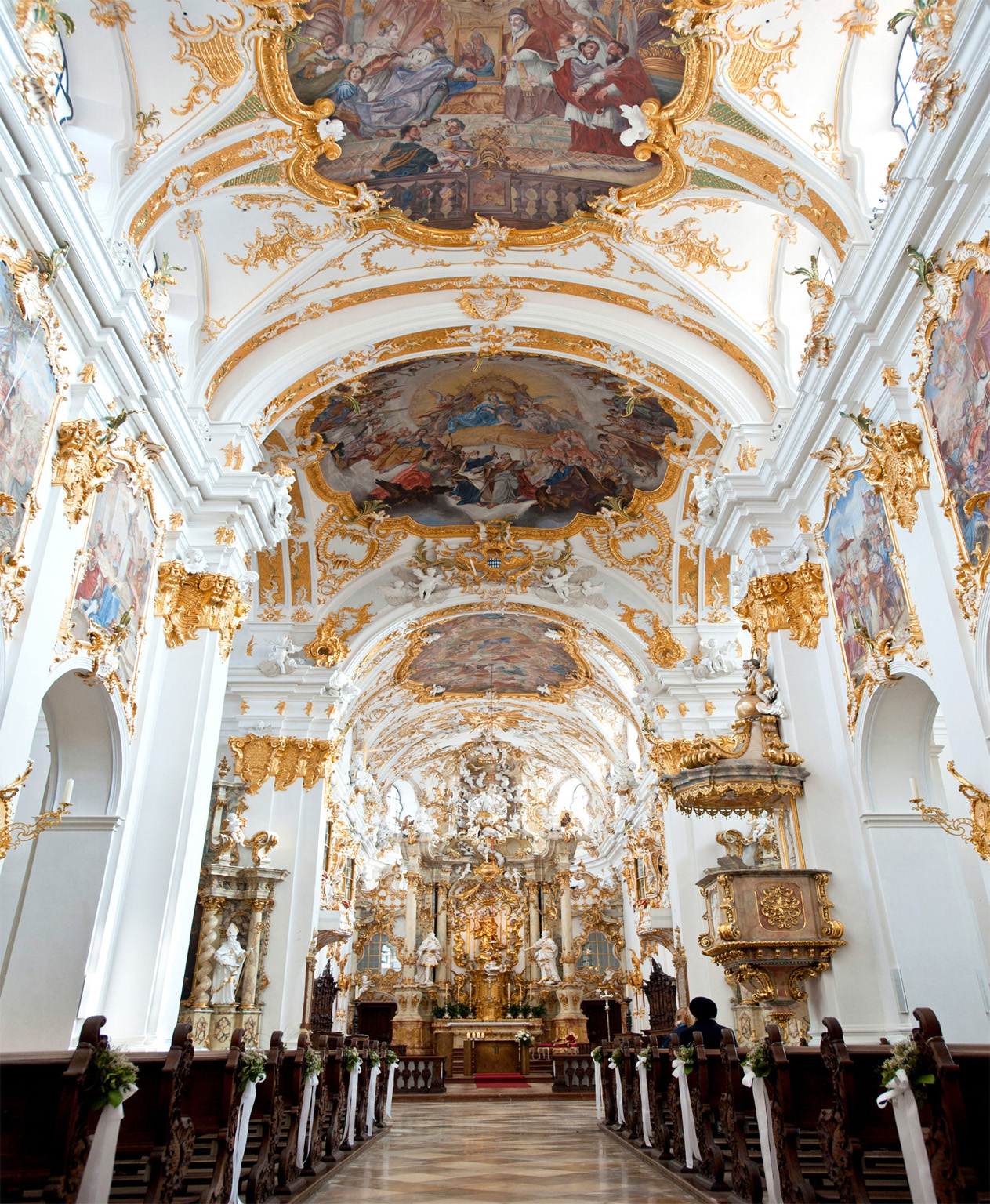
t The sumptuous stuccoed interior of the Alte Kapelle, Regensburg
Historische Wurstküche
⌂ Thundorferstrasse 3 # 9am–7pm daily ∑ wurstkuchl.de
'
Altes Rathaus
⌂ Rathausplatz Reichstagsmuseum § (0941) 507 34 40 # Times vary; call ahead
" '
Domschatzmuseum
⌂ Krauterermarkt 3 # Dec–Oct: 11am–5pm Tue–Sat, noon–5pm Sun ∑ domschatz-regensburg.de
" ' =
Schloss Thurn und Taxis
⌂ Emmeramsplatz 5 § (0941) 504 82 42 # Apr–Oct: 11am–5pm Mon–Fri, 10am–5pm Sat & Sun; Nov–Mar: 10am–3:30pm weekends and hols only ∑ thurnundtaxis.de
"
Museum der Bayerischen Geschichte
⌂ Donaumarkt 1 # 9am–6pm Tue–Sun ¢ Mon ∑ museum.bayern/museum.html

Insider Tip
Regensburg’s Wurstküche
This sausage kitchen is said to be one of the oldest restaurants in the world, and still serves customers to this day. About 40,000 sausages are sold here every week, in fact.

t Lindau harbour, with the Lion of Bavaria statue
In Roman times Lindau was a fishing settlement lying over three islands in Lake Constance. The first historic records of the town date from AD 882. On the south side of the old-town island is the harbour, with its 13th-century lighthouse (Mangturm). The New Lighthouse (Neuer Leuchtturm), built in 1856, is on the neighbouring pier. The marble Lion of Bavaria oppo-site is the symbol of Lindau.
The old town features many historic buildings, and picturesque Maximilianstrasse is lined with the houses of rich patricians; their shady arcades (Brodlauben) are typical of Lindau architecture.
In Schrannenplatz, in the northwest, is the church of St Peter. Since 1928 this has been a memorial to those killed in World War I. Its eastern part dates from the mid-12th century, while the bigger western section was built between 1425 and 1480. Inside are many wall paintings, including some by Hans Holbein the Elder. Nearby is the Diebsturm (Thief’s Tower) of 1380. The Stadtmuseum (town museum) is housed in Haus zum Cavazzen (1729) in Marktplatz, which also features a lovely Neptune fountain.
South of the Market Square is the 12th-century Protestant Church of St Stephen.

t The New Lighthouse
Stadtmuseum
⌂ Marktplatz 6 § (08382) 94 40 73 ¢ For renovation until 2022
Situated at the confluence of the Lech and Wertach rivers, Augsburg is the third largest town in Bavaria and one of the oldest in Germany. As early as 15 BC this was the site of a Roman camp, which later became a town known as Augusta Vindelicorum. Until the end of the 13th century, the town was ruled by powerful bishops. From 1316, as a Free Imperial City of the Holy Roman Empire, Augsburg grew to become one of the richest and most powerful cities in Germany. The Thirty Years’ War (1618–48), however, put an end to the town’s prosperity.
One of the town’s highlights is the Dom Unserer Lieben Frau (Cathedral of the Holy Virgin). Originally a Romanesque twin-choir, pillared basilica with crypt, western transept and two towers dating from 994–1065, the cathedral was remodelled between 1331 and 1431 along Gothic lines. It was given two further side aisles, a choir with an ambulatory and a French-style ring of chapels. Original features include the richly carved portals and a replica of the Romanesque bronze door with 35 panels depicting allegorical figures. There are some unique stained-glass windows, dating from 1140.
The Fuggerei, in Augsburg’s Jakobervorstadt (Jacob’s Suburb), is Europe’s oldest social housing estate. It was founded in 1516 by Jacob Fugger, a member of what was then the richest family in Europe. The intention was to provide homes for the town’s poorest citizens, particularly families with children. Today, however, it has evolved into a home for retired citizens. The 52 houses in Fuggerei were built in 1516–25 and line six streets. They are surrounded by gardens. One of the buildings houses the Fuggerei-Museum, devoted to the history of the estate and with a fascinating shop, the Himmlisches Fuggereilädle.
'
Dom Unserer Lieben Frau
⌂ Frauentorstrasse 1 # 7am–6pm daily
Fuggerei-Museum
⌂ Mittlere Gasse 14 § (0821) 31 98 81 14 # Apr–Sep: 9am–8pm daily; Oct–Mar: 9am–6pm daily
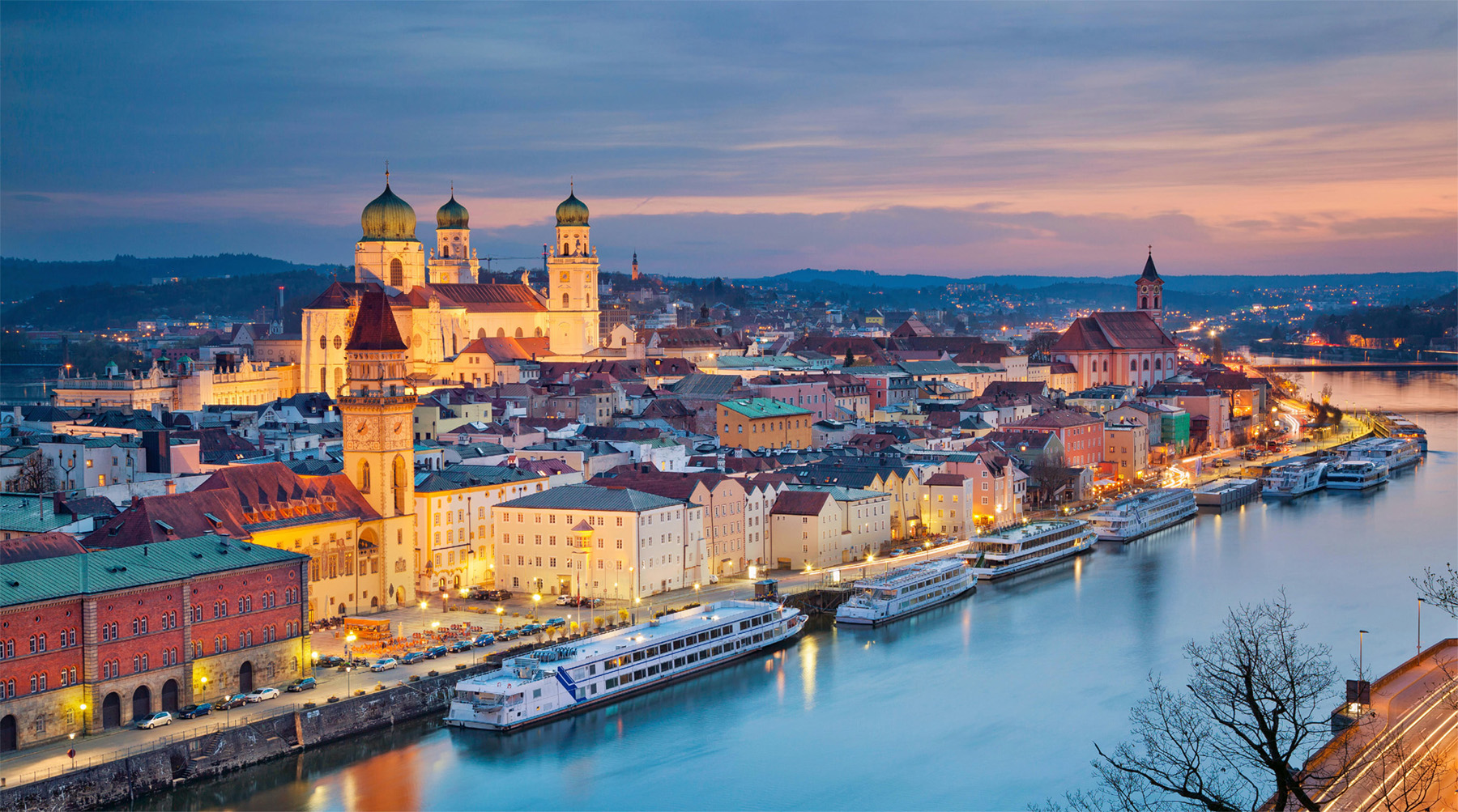
t The town of Passau at dusk, with boats lining the Danube
Passau, whose long history goes back to Roman times, lies on a peninsula between the rivers Danube and Inn, near the Austrian border. During the second half of the 5th century, St Severinus established a monastery in Passau as well as several more nearby. In 739 an Irish monk called Boniface, known as “Germany’s Apostle”, founded a bishopric here, and for many years this was the largest diocese of the Holy Roman Empire. Large parts of the town were destroyed by fires in 1662 and 1680. Reconstruction was then carried out by Italian artists, who gave the town its exquisite Baroque, Rococo and Neo-Classical façades. However, Passau retains a medieval feel in its narrow alleys and archways.
In the early 1850s, Schloss Linderhof was bought by the Bavarian king Maximilian II. The surrounding remote mountain district had great appeal to the young heir to the throne, Ludwig, later to become the eccentric King Ludwig II. In 1874 work started on remodelling the existing Königshäuschen (Royal Cottage) in the Neo-Rococo style.
The palace is surrounded by a delightful garden which is dotted with romantic little buildings, including the Schwanenweiher (Swan Lake), Venusgrotte (Venus Grotto) and the Marokkanisches Haus (Moroccan House).
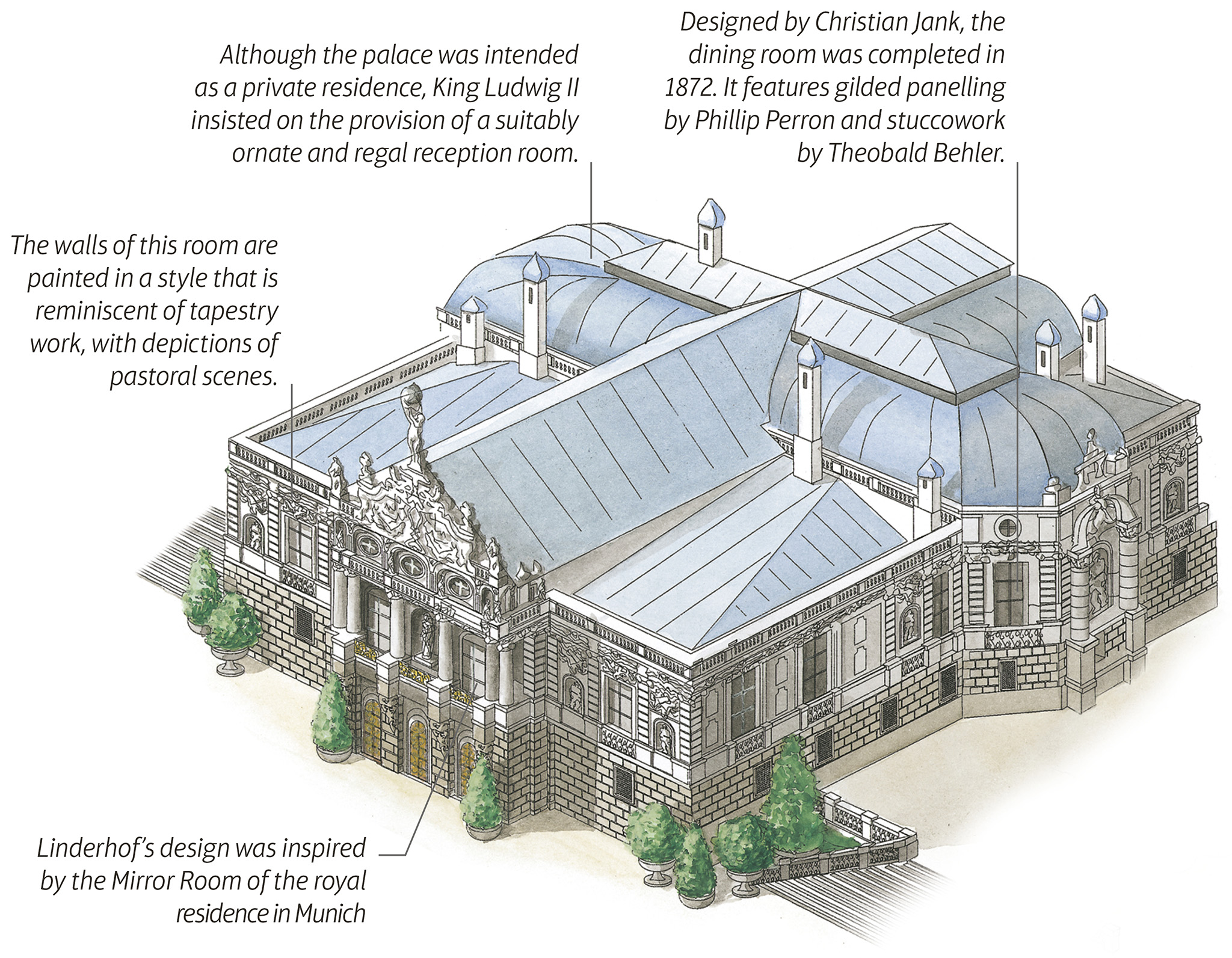
t The elegant Schloss Linderhof near the village of Ettal
Bavaria’s largest lake, Chiemsee, is a real paradise for water sports enthusiasts, with sailors, water-skiers, swimmers and divers all enjoying the opportunities it offers. The circular path around the lake and several hiking trails in the vicinity prove enjoyable for the pedestrians too. Chiemsee is set amid magnificent Alpine scenery in the region known as the Chiemgau, which stretches eastwards from Rosenheim to the border with Austria along the River Salzach.
Chiemsee is surrounded by numerous small towns and villages and dotted with islands, some of which feature fascinating historic buildings. Excellent land, water and rail transport facilities ensure trouble-free travel to all destinations in the area.

picture perfect
Colours of Passau
The three rivers that meet in Passau provide an unusual multi-coloured spectacle. When seen from the hills above, the waters of the Ilz, Danube and Inn appear black, brown and light green respectively, forming a watery tricolour as they flow out of town.
